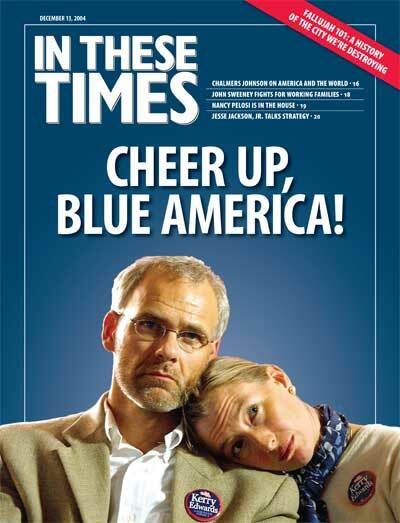
There may not be a more thoroughly ravaged national economy on the planet than Argentina’s — it’s a poster child for IMF wrack and ruin. As revealed in grueling, horrifying detail in Fernando Solanas’ 2004 documentary Memoria del Saqueo (shown here only in film festivals), the last 30 years or so have been a relentless litany of bureaucratic power grabs, political lies, privatization sell-offs and insidious opportunism, much of it at the International Monetary Fund’s insistence and due to President Carlos Menem’s bald-faced carpetbagging. In just a few decades a country that boasted South America’s most prosperous middle class was converted into a nation of scrambling beggars, saddled with an excess of 20 percent unemployment and a national bankruptcy that outscaled any other in world history.
Solanas’ film may be too outraged and too crystal clear in its history lesson to be released in this country, but in its stead we have Avi Lewis and Naomi Klein’s The Take, which thumbnails the last few years of Argentine economic freefall. In both films, at least, we are witness to footage of street protests so huge and of a boiling citizenry so engaged and aware of the perpetrators of their crisis that we’re given cause to wonder if it’ll take a wholesale economic disaster here before Americans decide to similarly take their lives and livelihoods into their own hands. Most of the Buenos Aires rioters’ violence was perpetrated upon ATMs and bank buildings. With four more Bush years ahead, we may not have long to wait.
Lewis and Klein’s movie confronts that reality immediately, introducing us to the “globalized ghost town” of empty Argentine factories, and reminding us that although this is Buenos Aires, “it could be anywhere.” The film’s focus, however, is on a movement to reclaim bankrupt factories with collectives formed by the laid-off laborers. It’s such a fantastic scenario, right in the dark heart of Globalization Central, that it seems like a schoolkid’s daydream come true, and the filmmakers are as amazed as we are. The movement itself is not small: Approximately 15,000 workers have “occupied” some 200 ownerless businesses, from private schools to hotels to the auto parts factory that Klein and Lewis focus on. There, a new collective of unemployed machinists struggles to legitimize itself and obtain a legal right to run the shop. In this dynamic, the workers typically get equal salaries and vote in assemblies on all business dealings.
From every conceivable perspective save that of the companies’ old owners, who want their concerns back now that they’re solvent and functioning, the collective model is the optimum manner for human business: fair, inspiring, effectual, non-exploitative.
“I don’t know why it was so hard for the bosses,” a middle-aged member of a suit-making company collective says about running a profitable enterprise. “You just add and subtract.”
Lewis and Klein’s modest movie has an embarrassingly patronizing tone but a triumphant arc: Among other happy endings, the seminal collective of middle-aged seamstresses that runs the Brukman suit manufacturer weather a lockout and a harrowing street clash with police before winning back their factory. Because it’s a movement that began from the ground up, like unions, this proto-Communist structure has a chance of becoming an integral part of the Third World landscape. But it’s also dismayingly vulnerable to government intervention and steamrolling international capitalism; one doubts that the WTO will let the Argentine “National Movement of Recovered Factories” get too large, too pervasive or too successful.
Still, Argentines have reason to be proud of their productive resistance, if not for everything else: As Lewis and Klein show, when Menem arose from his lair to run for a third presidency — this after having sold every imaginable resource and service to foreign companies so that even the street signs have MasterCard logos on them — he almost won. Like Americans, Argentines are susceptible to the hard sell, to messianic advertising and comforting untruths. But in being pushed to the wall, they may have come up with the answer to the industrial working world’s prayers.

I hope you found this article important. Before you leave, I want to ask you to consider supporting our work with a donation. In These Times needs readers like you to help sustain our mission. We don’t depend on—or want—corporate advertising or deep-pocketed billionaires to fund our journalism. We’re supported by you, the reader, so we can focus on covering the issues that matter most to the progressive movement without fear or compromise.
Our work isn’t hidden behind a paywall because of people like you who support our journalism. We want to keep it that way. If you value the work we do and the movements we cover, please consider donating to In These Times.








